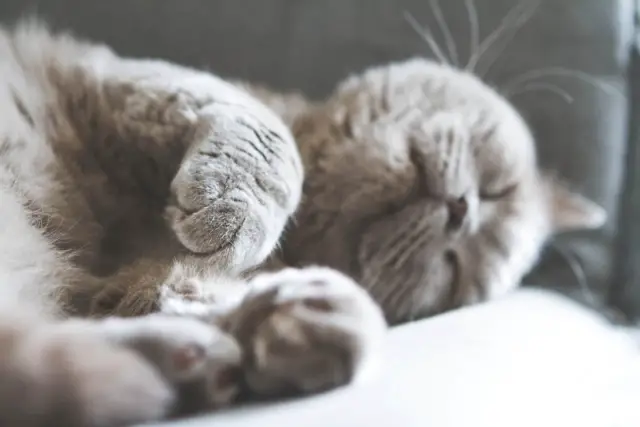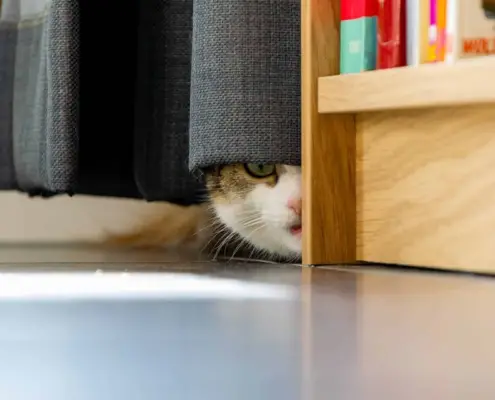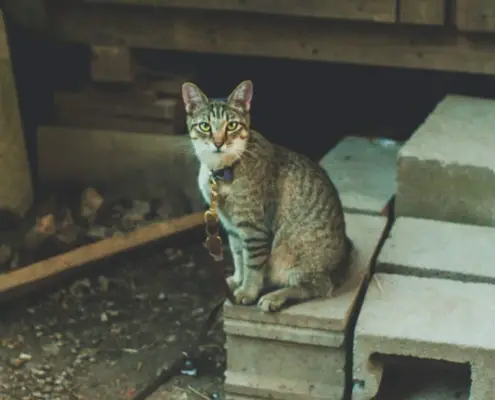
Cats are known for their graceful and agile nature, and one of the most intriguing features that contribute to their dexterity is their soft paws. Understanding the anatomy of a cat’s paw is crucial in appreciating the marvel behind their softness.
A cat’s paw consists of five toes, each equipped with a set of retractable claws. The pads on the underside of their paws provide cushioning and traction while walking or climbing. These pads are covered in layers of tough, keratinized skin, which acts as a protective barrier. Beneath the skin lies a network of blood vessels, nerves, and sensory receptors that make a cat’s paw highly sensitive.
Why Are Cat Paws Soft?
The softness of a cat’s paws can be attributed to several factors. Firstly, the skin on a cat’s paw is thinner compared to the rest of their body. This allows for increased sensitivity and better detection of textures and vibrations. Additionally, the pads on their paws contain specialized sweat glands called eccrine glands, which produce a thin layer of sweat. This sweat helps to keep their paws moisturized, maintaining their softness.
Another reason for the softness of cat paws is the presence of a fatty tissue layer underneath the skin. This layer acts as insulation, protecting their paws from extreme temperatures and providing additional cushioning. The combination of thin skin, sweat glands, and fatty tissue gives cat paws their unique soft texture.
The Purpose of Soft Cat Paws
The softness of cat paws serves several purposes, all of which contribute to a cat’s overall well-being. One of the primary functions is traction. The soft pads on a cat’s paws allow them to grip various surfaces, enabling them to walk, run, and climb with ease. This traction is especially important for outdoor cats that navigate different terrains.
Soft paws also aid in shock absorption. When cats jump or land from heights, their paws act as natural shock absorbers, reducing the impact on their joints and bones. This ability to absorb shock helps to prevent injuries and ensures that cats can move swiftly and effortlessly.
Additionally, the softness of cat paws enhances their sense of touch. Cats rely heavily on their paws to explore their surroundings and gather information about their environment. The sensitive pads on their paws can detect even the slightest vibrations, enabling them to hunt, play, and interact with their surroundings effectively.
How Soft Cat Paws Benefit Cats
The softness of cat paws provides several benefits to our feline friends. Firstly, it allows them to move silently. Soft paws make minimal contact with the ground, muffling their footsteps and enhancing their stealth. This natural trait is particularly advantageous for cats when hunting, as it allows them to approach their prey undetected.
Soft paws also contribute to a cat’s grooming routine. Cats use their paws to meticulously clean their fur, face, and ears. The soft pads on their paws help them navigate through their coat, removing dirt, debris, and loose hair. This self-grooming behavior not only keeps them clean but also strengthens the bond between a cat and its owner.
Furthermore, the softness of cat paws enables them to engage in various activities without causing harm. Whether it’s playing with toys, scratching on a scratching post, or kneading blankets, the soft paws ensure that these interactions are gentle and safe.
Interesting Facts About Cat Paws
- Did you know that a cat’s paw is not just soft on the outside? The bones and ligaments inside a cat’s paw are highly flexible, allowing them to adapt to different surfaces and positions effortlessly.
- Cats have a unique ability called “paw kneading.” This behavior is commonly seen when cats are content and relaxed. By rhythmically pushing their paws in and out, cats mimic the actions they performed when they were nursing as kittens. It’s a comforting and soothing behavior for them.
- A cat’s paw pads have scent glands that release pheromones. These pheromones serve as a way for cats to mark their territory and communicate with other cats.
Caring for Your Cat’s Paws
Caring for your cat’s paws is essential to ensure their overall health and well-being. Regular inspection is crucial to detect any signs of injury or infection. Check for any cuts, swelling, redness, or foreign objects stuck between the toes. If you notice anything unusual, consult your veterinarian.
Maintaining the cleanliness of your cat’s paws is also important. Keep their litter box clean and provide a suitable scratching post to prevent the accumulation of dirt and bacteria. Regular grooming, including brushing their fur and trimming their claws, will help keep their paws and surrounding areas clean.
Lastly, moisturizing your cat’s paws can help keep them soft and prevent dryness or cracking. Consult your veterinarian for suitable paw balms or moisturizers that are safe for feline use.
Common Paw Problems in Cats
Just like any other part of their body, cat paws can experience various issues. Some common paw problems include:
- Feline Pododermatitis: This is an inflammation of the paw pads and is often caused by allergies or infections.
- Ingrown Claws: When a cat’s claws grow too long or are not properly maintained, they can curl and grow into the paw pad, causing pain and discomfort.
- Burns or Frostbite: Exposure to extreme temperatures can lead to burns or frostbite on a cat’s paws. It’s important to protect them from such conditions.
If you notice any signs of discomfort or abnormality in your cat’s paws, consult your veterinarian for proper diagnosis and treatment.
Fun Ways to Engage Your Cat’s Paws
Engaging your cat’s paws in play and exercise is not only enjoyable for them but also beneficial for their physical and mental well-being. Here are a few fun ways to keep their paws active:
- Interactive Toys: Provide toys that require pawing, batting, or grabbing. Toys with dangling strings or feathers are particularly enticing for cats.
- Scratching Posts: Invest in a sturdy scratching post that allows your cat to stretch, scratch, and engage their paws. Place it strategically to encourage their use.
- Food Puzzles: Use food puzzles or treat-dispensing toys that require paw manipulation to access the rewards. This stimulates their natural hunting instincts.
Remember to supervise playtime and ensure that toys are safe and suitable for your cat.
The Importance of Paw Massages for Cats
Paw massages are not only a luxurious treat for your cat but also provide numerous health benefits. Massaging their paws can help relieve stress, improve circulation, and strengthen the bond between you and your feline companion. Follow these steps to give your cat a relaxing paw massage:
- Find a quiet and comfortable space where your cat feels relaxed.
- Gently hold your cat’s paw and apply gentle pressure with your fingertips, starting from the base of the toes and moving towards the pads.
- Use circular motions to massage the pads and apply light pressure along the length of each toe.
- Pay attention to your cat’s response. If they seem uncomfortable or show signs of distress, stop the massage and try again another time.
Regular paw massages can become a soothing routine for both you and your cat.
Conclusion
The softness of cat paws is a fascinating aspect of feline anatomy. It not only contributes to their agility and grace but also serves various important functions. From providing traction and shock absorption to enhancing their sense of touch, soft cat paws play a crucial role in a cat’s daily life. By understanding the unique features of their paws and caring for them appropriately, we can ensure that our feline friends enjoy a happy and healthy existence.
Next time you observe your cat purring or pawing, take a moment to appreciate the marvel behind their soft paws and the wonders they bring to their fascinating world.
Show your furry friend some love by giving them a gentle paw massage today. Watch as they relax and enjoy this special bonding experience.
If you enjoyed my article, I would appreciate you sharing it with your network.

Sima Ndlebe
Sima writes for CatBuzz. He is interested in Cats, Health and Fitness, and Entrepreneurship.
Published: 30 October 2023



